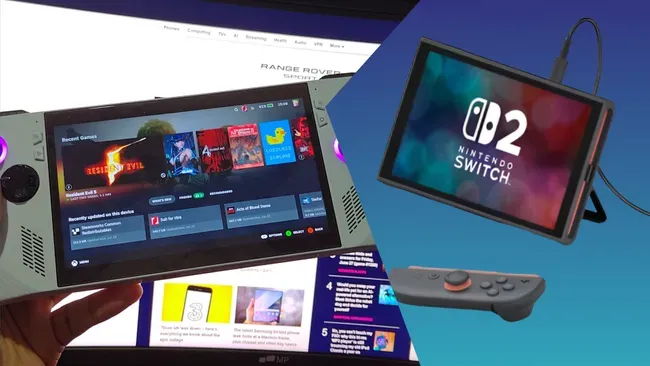Nintendo Switch 2’s Display Is a Letdown Compared to Handheld Gaming PCs
Gamers eagerly awaiting the Nintendo Switch 2 expected cutting-edge performance, but the console's outdated LCD screen has sparked disappointment. With an average response time of 33ms at 60Hz, the Switch 2’s display significantly lags behind today’s industry standards, especially when compared to modern handheld gaming PCs like the Asus ROG Ally and MSI Claw 8 AI+. If you’ve been wondering whether to invest in Nintendo’s latest release or opt for a more powerful handheld gaming PC, the answer might be clearer than ever. The switch to handheld gaming PCs offers not just improved visuals but also better value and performance across the board.
Image credit: Future / Isaiah WilliamsDisplay Quality on Nintendo Switch 2 Falls Behind
When evaluating any gaming device, the display plays a critical role in user experience—something the Nintendo Switch 2 fails to impress with. Unlike its OLED predecessor or many handheld competitors, the Switch 2 features an LCD panel with underwhelming specs. At 33ms response time and 60Hz refresh rate, it introduces noticeable ghosting and motion blur, especially during fast-paced gameplay. This is particularly concerning for action-heavy titles like Super Smash Bros. Ultimate or Mario Kart World, where visual clarity is vital for competitive play. Additionally, the console doesn’t meet the baseline for HDR support, unable to reach 400 nits of brightness, further dampening the visual experience for modern gamers.
This lack of display performance is a stark contrast to what handheld gaming PCs now offer. Devices like the ROG Ally boast high refresh rates, superior color reproduction, and faster response times, delivering crisp and vibrant visuals. While Nintendo is known for prioritizing gameplay over hardware specs, in 2025, that philosophy feels increasingly outdated—especially when premium pricing doesn’t match the performance offered.
Handheld Gaming PCs Deliver Better Value and Performance
The price-to-performance ratio of the Nintendo Switch 2 continues to raise eyebrows. With games priced at $70–$80 and hardware limitations that are glaring by today’s standards, consumers are starting to question whether it's worth the investment. On the other hand, handheld gaming PCs like the Asus ROG Ally and MSI Claw 8 AI+ come equipped with powerful CPUs, dedicated GPUs, and high-refresh-rate displays that make for a noticeably smoother gaming experience. They also double as mini PCs, letting users install mods, run emulators, or multitask beyond just gaming.
Unlike the Switch 2, these Windows-based devices offer much more flexibility. Want to run Steam? No problem. Need Xbox Game Pass support? It’s built in. Prefer tweaking graphics settings to get the best performance? You’re in full control. Even if you’re a casual gamer, the intuitive UIs on these handhelds make setup and play easy. When you consider long-term value, the choice leans heavily toward a gaming PC handheld that offers full game libraries, powerful hardware, and fewer limitations.
Why Gamers Are Embracing PC Handhelds Over the Switch 2
More gamers are gravitating toward handheld gaming PCs not just because of raw performance, but because they offer a more future-proofed investment. The limitations of the Nintendo Switch 2’s display—paired with its proprietary ecosystem and lack of third-party support—make it a harder sell in today’s evolving gaming market. Meanwhile, the Steam Deck, ROG Ally, and similar devices offer flexibility, advanced graphics, and the ability to tailor your gaming setup to your personal preferences.
Moreover, the tech-savvy crowd appreciates the customization options available on handheld PCs. Whether it’s using custom operating systems like Bazzite, installing performance monitoring tools, or tweaking fan curves, these devices empower users to control every aspect of their experience. Nintendo’s all-in-one simplicity has its place, especially for families or casual gamers. But for those seeking performance, visual fidelity, and device longevity, handheld gaming PCs are proving to be the smarter choice.


Post a Comment